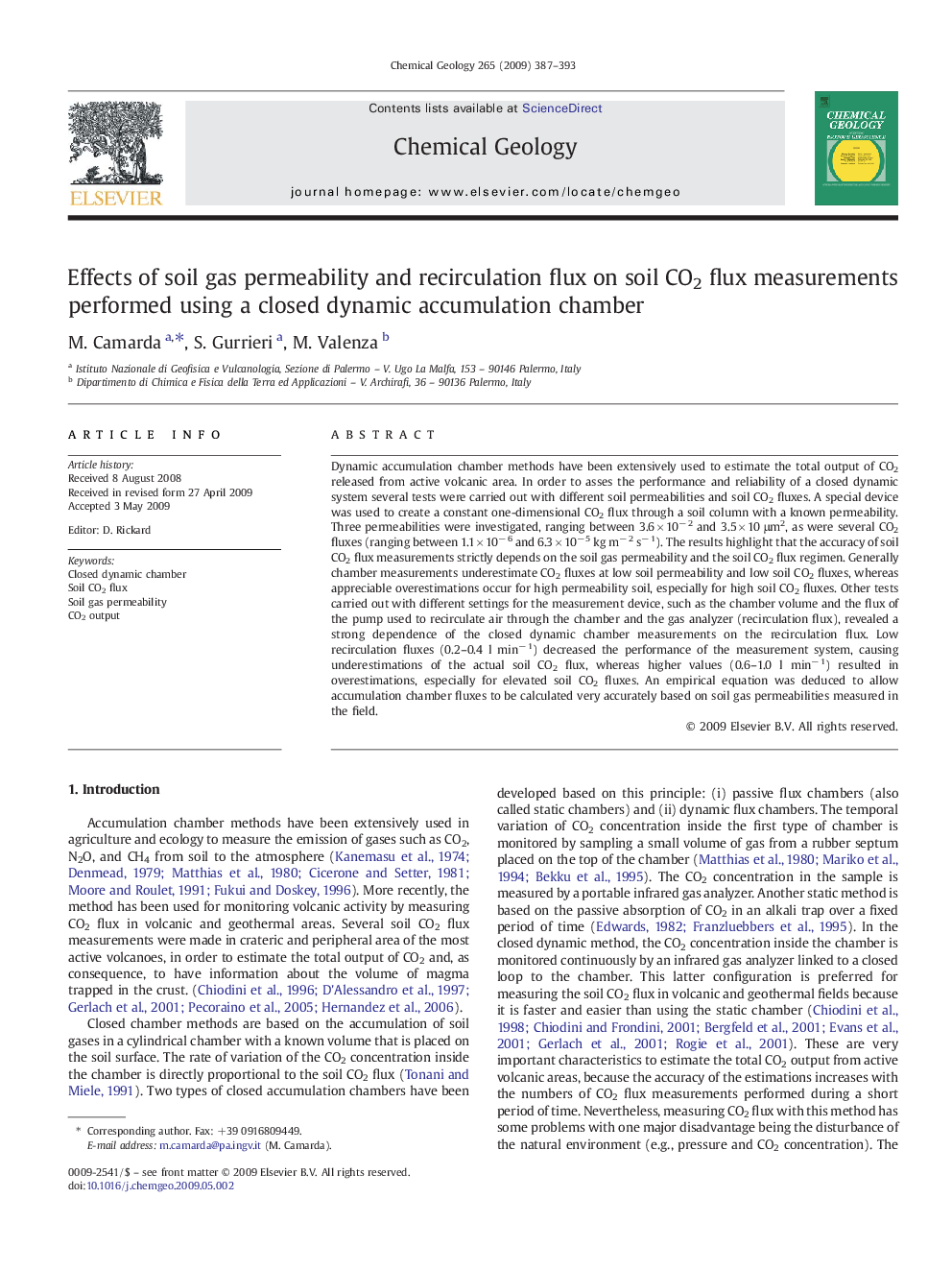| Article ID | Journal | Published Year | Pages | File Type |
|---|---|---|---|---|
| 4700223 | Chemical Geology | 2009 | 7 Pages |
Dynamic accumulation chamber methods have been extensively used to estimate the total output of CO2 released from active volcanic area. In order to asses the performance and reliability of a closed dynamic system several tests were carried out with different soil permeabilities and soil CO2 fluxes. A special device was used to create a constant one-dimensional CO2 flux through a soil column with a known permeability. Three permeabilities were investigated, ranging between 3.6 × 10− 2 and 3.5 × 10 μm2, as were several CO2 fluxes (ranging between 1.1 × 10− 6 and 6.3 × 10− 5 kg m− 2 s− 1). The results highlight that the accuracy of soil CO2 flux measurements strictly depends on the soil gas permeability and the soil CO2 flux regimen. Generally chamber measurements underestimate CO2 fluxes at low soil permeability and low soil CO2 fluxes, whereas appreciable overestimations occur for high permeability soil, especially for high soil CO2 fluxes. Other tests carried out with different settings for the measurement device, such as the chamber volume and the flux of the pump used to recirculate air through the chamber and the gas analyzer (recirculation flux), revealed a strong dependence of the closed dynamic chamber measurements on the recirculation flux. Low recirculation fluxes (0.2–0.4 l min− 1) decreased the performance of the measurement system, causing underestimations of the actual soil CO2 flux, whereas higher values (0.6–1.0 l min− 1) resulted in overestimations, especially for elevated soil CO2 fluxes. An empirical equation was deduced to allow accumulation chamber fluxes to be calculated very accurately based on soil gas permeabilities measured in the field.
